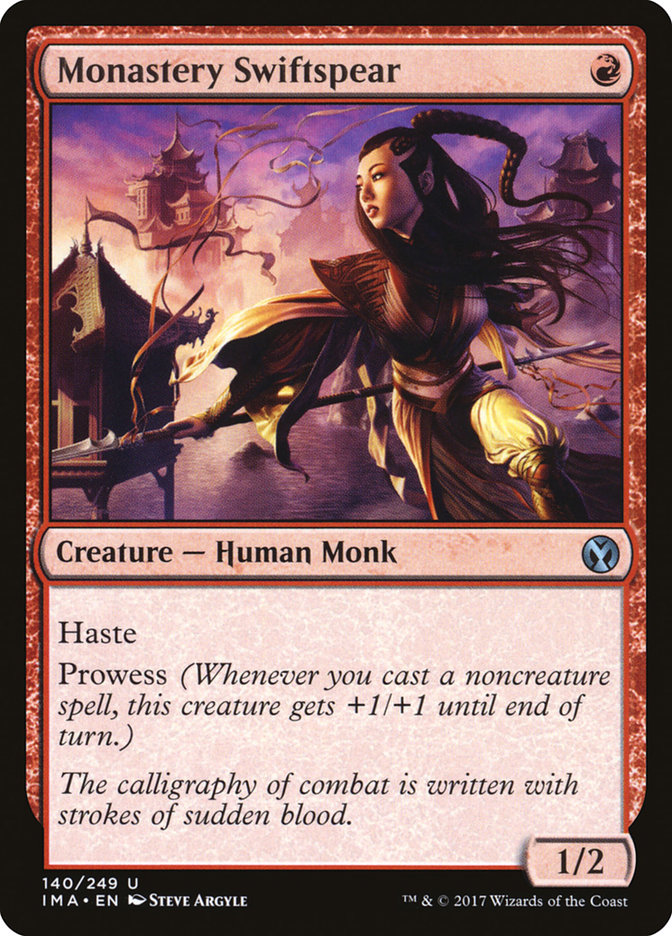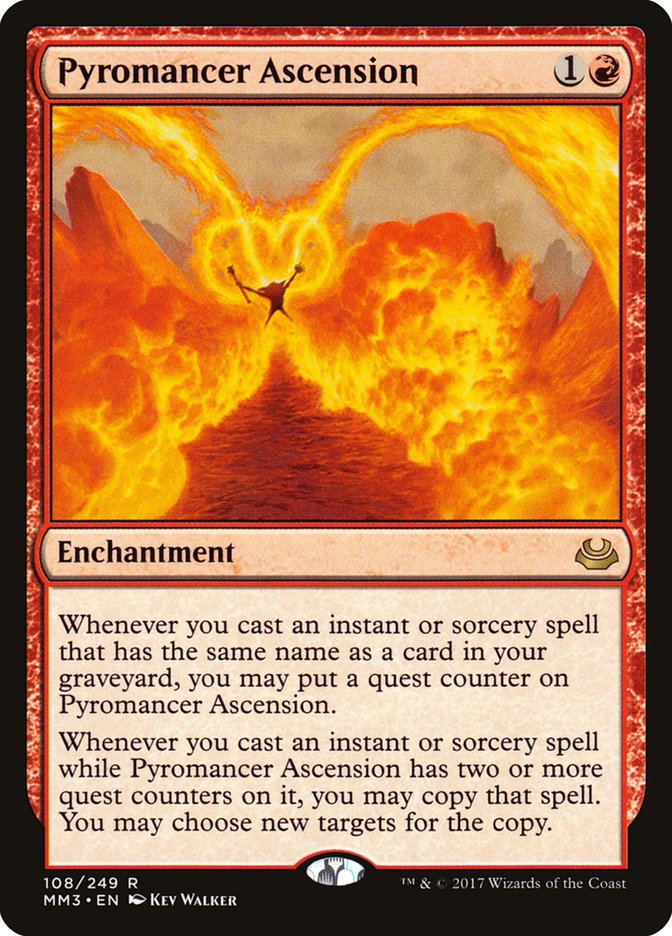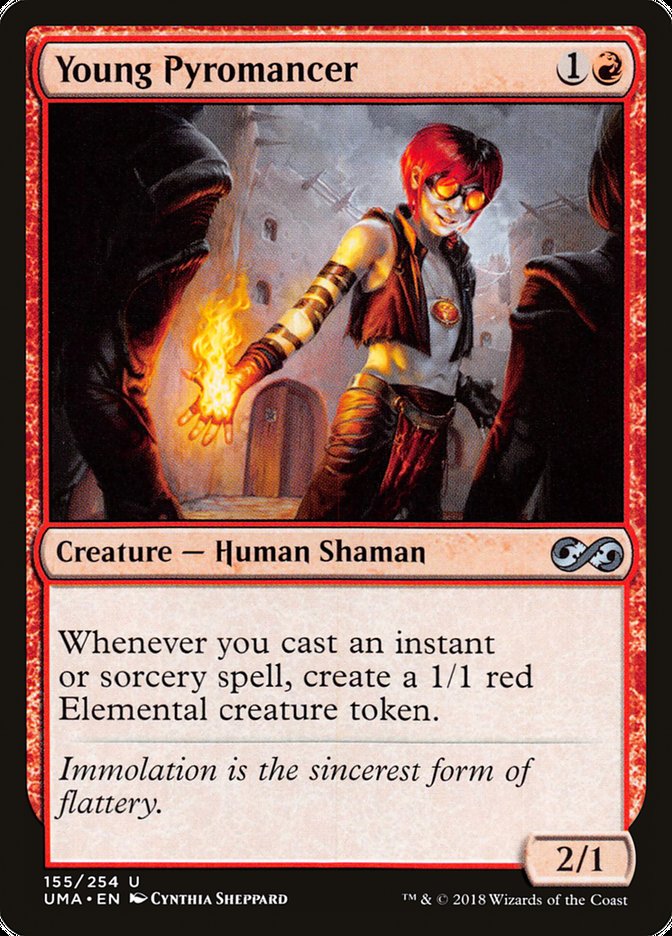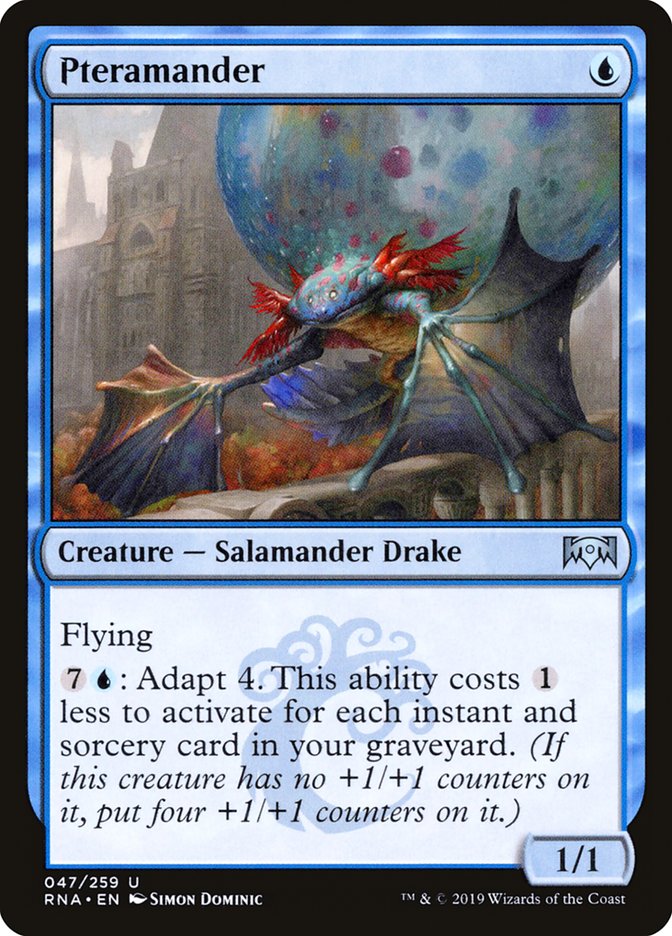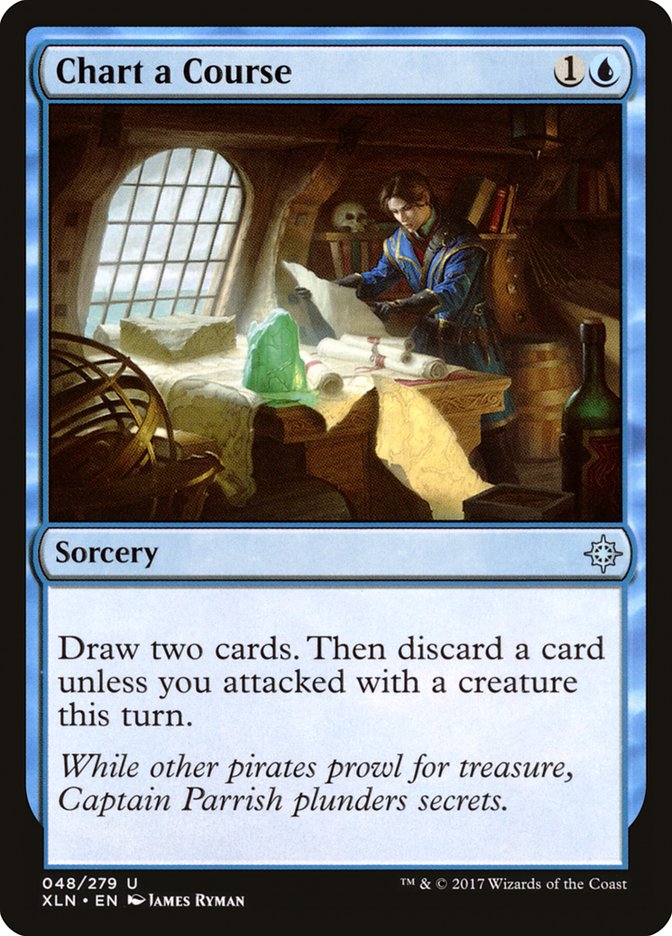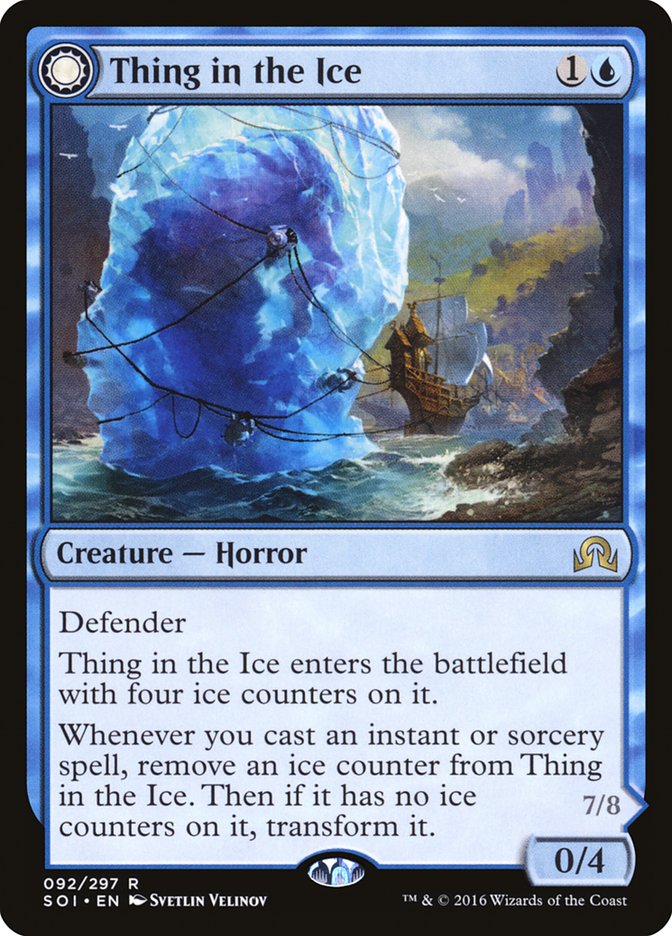Standard is entering its lame duck stage where the format is clearly defined and we can see a new set on the horizon. That means it’s time to shift back into Modern mode, especially with Regionals and a Modern Open in Philadelphia coming over the next two weeks.
When last I left, my baby, Izzet Phoenix, was all grown up, rising from the ashes of Krark-Clan Ironworks to become the undisputed best deck in the format. Let’s see where we are now.
Creatures (12)
Lands (18)
Spells (30)

Yes, Izzet Phoenix continued its run of success at Grand Prix Los Angeles, taking two of the Top 8 slots and the trophy. Dredge seems to be vying with it for supremacy in the format, since it’s the other deck that runs the appropriate number of copies of Faithless Looting, but its raw power isn’t enough to make up for the vulnerability of being so linear, especially in a world where maindeck Surgical Extraction has become increasingly common.
With the success of Izzet Phoenix have come several steps in the deck’s refinement. What started as a powerful but awkward concoction that played way too many expensive spells has become a well-oiled machine of one-mana cantrips and efficient threats that pair well with them. However, there seems to be a divide as to which threat best supplements the standard package of Thing in the Ice, Arclight Phoenix, and Crackling Drake.
In one corner we have Pteramander, the new Salamander on the block and breakout card from last weekend’s Legacy Open. In the other, we have long-time multi-format all-star Snapcaster Mage, a card with as much pedigree as any printed in the last two decades. Each Top 8 list from LA contained one of these cards and not the other, and I’ve seen a similar schism among lists published online for a while now. It’s a battle of old versus new moving forward for Izzet Phoenix, and I’m here to break down each card’s strengths and weaknesses.
The Riff-Raff
Before we get into the real debate, a few remarks on three cards which were the popular choices to round out the threat base before the last month or so. I’ve played with each of them, and all failed to impress. Monastery Swiftspear dies to Lightning Bolt and other removal spells that the rest of your threats dodge, which is a recipe for turning on your opponent’s dead cards. It’s rather poor against any creature deck that can readily block it, forcing you to trigger prowess many times a turn to get good value from it. It was added to the deck to help clock opposing combo decks, but it wasn’t particularly good at that unless you warped the list around it, and that job is less valuable in a post-Ironworks world.
Pyromancer Ascension is the most powerful of the three, but also cumbersome and slow, which is a significant downside in Modern. In a metagame with more Golgari Midrange, Jund, and Control decks it could have a place, especially because as a noncreature threat it significantly diversifies the suite of answers your opponents need to cover all their bases, but even then cards like Abrupt Decay and Celestial Purge are clean answers that also cover your other cards.
Young Pyromancer is another mopey threat that dies to otherwise dead removal, and leaving behind a token or two doesn’t impress me. I like the card specifically against Death’s Shadow decks, where buying time with chump blocks is relevant and the small value it generates can help you grind through their pile of removal and discard spells, but it’s a low-impact card in the mirror and plays horribly with Thing in the Ice, so it’s not a card I want to draw consistently.
Note that all three of these cards are poor topdecks when you’re low on resources, which was problematic in longer games. (Yes, not every game of Modern ends by Turn 5.) One of the ways that decks try to attack Izzet Phoenix is on its low threat density. With all the cards it sees, the deck certainly plays like it has more than twelve threats, but if you’re able to keep parity in the early game it’s easy for the Izzet player to hit a pocket of air in their deck, giving you time to build an advantage. In these games, you need your threats to be high-impact, and none of these fit that mold.
That last threat slot was the final missing piece to the deck. I was consistently unhappy with it, hence why I kept trying various options, and now it seems like the masterpiece is complete. The only question is which finishing touch to put on it. So let’s get into them, starting with the young upstart, barely more than an eft, Pteramander.
When I first read this card during preview season, I was immediately excited. Its numbers fit the mold of Dig Through Time and Treasure Cruise, and while not as powerful obviously, that meant it shouldn’t be that difficult to adapt it into a 5/5 flyer around Turn 4 or 5, which is exactly the time that Thing in the Ice and Arclight Phoenix either end the game or are answered, leaving you to reload.
In a longer game, the card would effectively turn into a 5/5 flyer for UU, aka the blue Tombstalker. That’s…a good topdeck. And in the early turns, having a one-mana creature could help enable Chart a Course to be a cheap Divination, making it a better option than Izzet Charm as a secondary discard outlet for Arclight Phoenix. In sum, there was a lot to like here.
I soured a bit on the card as preview season continued and I focused on Standard, convincing myself that it would be too hard to adapt without losing it to the aforementioned red removal I was trying to dodge by getting away from cards like Monastery Swiftspear and Young Pyromancer. It was also a second threat that opened you up to Leyline of the Void and Rest in Peace, which was why I got away from Bedlam Reveler in the initial build. Pteramander is at least functional as a Flying Men, as opposed to uncastable, but being a graveyard deck that largely ignores the most powerful graveyard hate is one of Izzet Phoenix’s greatest strengths, and I was afraid to sacrifice that.
When I played with the card, my concerns melted away. The adapt cost was often cheap enough that I could activate it a second time in response to a Lightning Bolt; it applied significantly more pressure than the previous options; and having another large, flying body was particularly helpful in the mirror, where both players equip themselves to answer Thing in the Ice and Arclight Phoenix and either one player fails and loses or you move to a long game where high-impact flyers rule the day.
However, I did find that, even with Pteramander, Chart a Course was subpar. First, it’s still slow and cumbersome in a format defined by speed, and second, Pteramander is not a good Turn 1 play. You don’t want to expose it to Lightning Bolt, Gut Shot, or Darkblast unnecessarily, and the potential extra few points of damage aren’t worth it against those decks, so holding it until it reaches Tombstalker mode is often the correct play. Sure, if your opponent is on a non-interactive deck or something like Azorius Control that is relying on Path to Exile, run it out there, but otherwise I’d advise patience.
Relative to Snapcaster Mage, Pteramander is significantly more aggressive, which is the direction I want to go with this slot. The combination of robust threats, card advantage from Crackling Drake and Arclight Phoenix, and a low land count means Izzet Phoenix can play a longer game against control decks, especially with Faithless Looting turning excess lands into spells later on. It’s the same virtual card advantage that Delver decks use to their advantage in Legacy. I want to be able to more effectively pressure non-interactive decks or create immediate pressure once my first wave of threats is answered, both of which Pteramander does quite well.
That is not to say Snapcaster Mage is without its charms. I’ve played a copy in my sideboard and been quite impressed with it, and in some ways it plays quite nicely with the rest of the deck. There’s the obvious synergy with cheap spells and the potential to bounce it with Thing in the Ice for maximum value and style points, but there are other factors at play that are more subtle.
First, a deck with so many cantrips likes to play single copies of high-impact cards, especially if those cards can be thrown away to Faithless Looting when they aren’t wanted. Snapcaster Mage helps to magnify the effect of these cards by giving you a chance to re-use them. Cards like Spell Pierce / Dispel, Lightning Axe, and Surgical Extraction are all in this category. Even Gut Shot is a great card to Flashback on a key turn against Infect or Hardened Scales, where mana efficiency is at a premium.
The card advantage Snapcaster Mage provides is also very good against heavy disruption decks which can limit your ability to recur Arclight Phoenix or transform Thing in the Ice. Having a threat that casts a spell effectively increases your spell density for free, making it easier to power through that disruption.
However, the maindeck in Izzet Phoenix is full of redundant cantrips. It’s not until the sideboard games that you gain access to most of the powerful, narrow effects that maximize the power of Snapcaster Mage, which is why I relegated it to my sideboard. Snapcaster Mage has been most effective in decks that want to cast different forms of disruption, yet also have some options when casting it proactively, like Grixis Death’s Shadow and Jeskai Control with their various removal spells, counters, and discard alongside some cantrips.
Izzet Phoenix only has two modes for Snapcaster Mage in the maindeck unless you count Izzet Charm or Surgical Extraction, which makes the card rather unimpressive. If the body were more relevant, the lack of versatility wouldn’t be such an issue, but a 2/1 in Modern is mostly trying to trade for an early creature or let a reactive deck force the action. It’s not going to apply relevant pressure out of a proactive deck.
So the difference is really whether you want to take the deck in a more aggressive or defensive direction. Modern is known as a haven for linear strategies, but there are plenty of decks against which the value of Snapcaster Mage is relevant. These include not only reactive decks like Jund and Azorius Control, but things like Hardened Scales, where getting another Lightning Bolt and a blocker could be crucial to buy time for Thing in the Ice or Crackling Drake, or in the mirror, where answering those bigger creatures is crucial and you only have a few spells that do so.
Personally I’m in favor of being more aggressive, at least before sideboarding, but I think it’s close enough that I can see shifting between the two cards depending on the metagame. With Ironworks gone, there aren’t a lot of linear decks at the moment, or at least linear decks where Snapcaster Mage isn’t effective. Against Dredge, for example, I’d like to have more access to Surgical Extraction, since the second and third copies are often backbreaking and let you be more aggressive with the first one. Still, for me the default option will be Pteramander and I’ll need to be convinced by other factors to move away from it.
Speaking to the issue of both cards making the deck more vulnerable to graveyard hate, with Ironworks out of the format there aren’t a lot of Rest in Peaces and Leyline of the Voids around these days. The rise of Dredge will likely change that, but here’s the kicker: even if hard graveyard hate is now good against a Pteramander/Snapcaster build, I’ve wisely spent the last four months telling everyone the opposite, so most players won’t bring it in anyway. It’s what we in the business call the long con.
The bottom line is until I start seeing those cards on the other side of the table, I’m not going to worry about a problem that doesn’t exist. If it does prove to be an issue, it’s not hard to sideboard an extra threat or two to maintain your threat density in the face of increased hate.
With the London mulligan and Modern Horizons coming soon, the landscape of Modern could change drastically over the next six months, but for now Izzet Phoenix is the top dog, or cock of the walk for a more species-appropriate idiom. The deck is powerful enough to withstand the influx of a new set and powerful new strategies; in fact, it may be supercharged by the addition of something like Careful Study or even Obsessive Search. If you want to have success in Modern, you have to understand how this deck functions, and now that it’s well-tuned, that means dissecting it to an even finer level than before.
No matter which side of the Pteramander/Snapcaster Mage debate you fall on, knowing if and when to deviate from that is key to having consistent success, because the metagame never stops shifting, and if you’re standing still, you’re falling behind.



